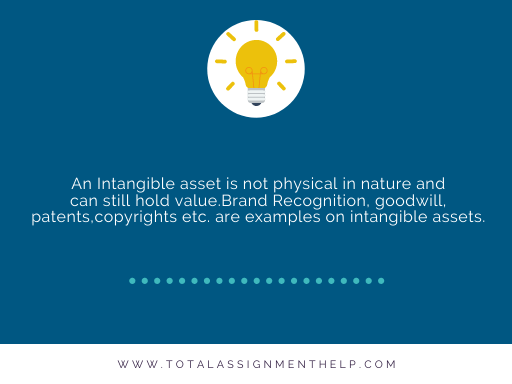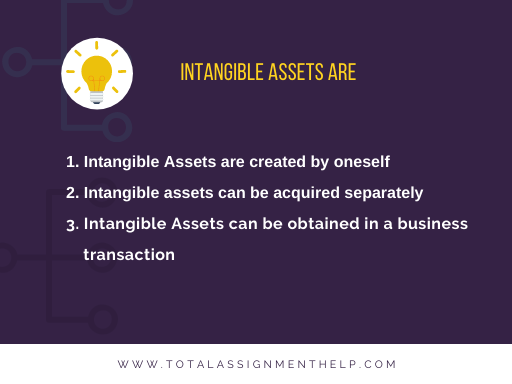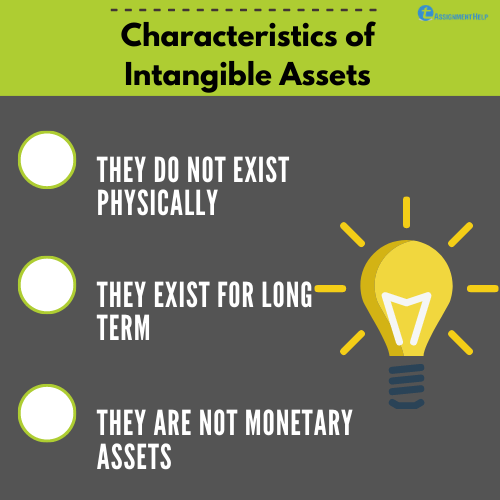Provisions in AASB 138 for Intangible Assets Management
Question
Task: Describe the various provisions in AASB 138 Intangible Assets’ treatment with the help of a practical example.
Answer
Introduction
The AASB 138 serves the primary objective of describing the treatment and consideration of intangible assets which is not explicitly laid down by any other standards. As per AASB 138 Intangible assets may only be revealed by a firm under some specific criteria. The standard also involves the various required disclosures for intangible assets and how the value or carrying amount of the assets is calculated (Özcan, 2017). All businesses also take responsibility and invest their money on creating, obtaining, improving or preserving intangible resources such as technological or scientific intelligence, introducing and designing new processes or mechanisms, business intelligence, patents and intellectual property. Trade barriers, manufacturer or supplier relationships, customer base, distribution rights, brand loyalty, trademark, software programs and intellectual property rights are some indicators for such assets. Even so, all properties don't really come under the interpretation of intangible assets according to paragraph 9 of AASB 138 (Dahmash, Durand, & Watson, 2009). If the element is not eligible to be accepted as per the requirement, the costs associated with obtaining or producing the asset internally must be recorded at the time of expended. Even then, whenever the element is purchased, it would be considered as the part of generosity recognized at the date of purchase.

Identification and Calculation for AASB 138 Intangible Assets
Each item being accepted as an intangible asset entails an agency to assess the object passes the following criteria:

- It passes the acceptance requirements given for in paragraph 21-23 of AASB 138
- It fits the description of intangible assets in accordance with AASB 138 paragraph 8-17
The above condition refers to the initial cost of purchasing or producing the intangible asset internally and the sum expended to allow the incorporation or replacement of the asset or maintenance of the commodity. The paragraph 25-32 of AASB 138 corresponds with the implementation of acknowledgement requirements for the independent acquisition of the intangible asset, while paragraph 33-43 corresponds to the implementation of the intangible assets obtained within the company mix. Furthermore, paragraph 44 of the norm corresponds with the initial assessment of intangible assets whereas paragraph 48-50 dealt with the internally created gratitude consideration. In addition, paragraph 51-67 of AASB 138 intangible assets deals with measuring and early identification of the internally obtained intangible assets (Wyatt & Abernethy, 2008).
According to paragraph 21 of AASB 138, for the recognition of any asset as an intangible asset, it must follow the following criteria:
- The value of the resources can be computed accurately.
- The potential financial valuation with respect to the asset is predicted to provide gains to the business.
In accordance with paragraph 22 of the AASB 138 intangible Assets, an entity shall analyze the likelihood of the projected future cash flows via the defensible and rational inferences which might embody the stakeholder's best estimate of the financial circumstances which may emerge over the effective useful lives of the assets. However, paragraph 23 notes that a company utilizes the decision to determine the sense of credibility linked to the influx of potential financial benefits that lead to the use of resources depending upon the existing data, while at the same time allowing the initial identification and assigning the objective evidence a higher weight period. Originally, the intangible asset should be accepted at the expense as per paragraph 24 of AASB 138. Quite apart from provisions of paragraph 24, in relation to the non - profit organization, in which the asset was obtained for little to no-cost, the expense is the market value of the purchase.
Internally created benevolence
According to paragraph 48 of AASB 138 intangible assets, the internally produced generosity should not be listed as the resource. In some cases, the overhead costs incurred corresponds to generate future cash flows but do not lead in intangible asset creation that meets the norm of acknowledgement. Essentially, those very costs are defined as contributing to the benevolence that is founded internally. Furthermore, the generosity created internally would not be defined as a resource because it cannot be distinguished from the recognizable property, which is the asset or it does not emerge from the binding legal protection. It is probable that the dissimilarities concerning the recoverable value as well as the equity value of the recognizable current assets may obtain the wide variety of components that will influence the valuation of the asset (Bond, Govendir, & Wells, 2016). The variations, therefore, do not define the value of intangible assets which the company controls.

Description of Telstra Corporation Ltd.
Telstra is the Australian broadcasting and networking corporation that manages and develops the telephone system and sells the phone, video, TV Service, internet connectivity as well as other infotainment equipment and services (Telstra.com.au 2017).
How Telstra Corporation handles their assets as per AASB 138 Intangible Assets?
Glancing at Telstra Corporation Ltd.’s financial statement during the year prior to 2016, it is understood that the generosity gained under its controlled transaction is calculated as an expense. Such a value equals additional payment over recoverable amount of recognizable assets at the date of issuance to the controlled transaction (Zhuang, 2016). Additionally, the generosity was not amortized because it was checked on a regular basis for disability reasons or when there is evidence of disability. In addition, intangible assets entail resources which are primarily found internally, in specific the IT infrastructure expenses involved to construct, develop and implement the enhanced or new IT-related methods and technologies. Research-related expenses are expended when sustained, and the additional overhead costs corresponding to the purchase of goods and services, the expenses associated with employee salaries and the lending rates primarily contributing to eligible assets are capitalized (Steenkamp & Steenkamp, 2016). Nevertheless, as per AASB 138 intangible assets procured via a completely distinct purchase or a business transaction are documented on the date of acquisition at actual costs and are acknowledged distinctly from the benevolence (Telstra.com.au 2017).
Abnormalities Intangible Assets
When measuring the actual cost, the business calculates the impairment loss and the face value of cash-generating units for the loss evaluation. The projections of value in use utilize the theoretical foundations such as profitability estimates, operational inflation rates and market prices (Carvalho, Rodrigues, & Ferreira, 2016).
Conclusion
It is derived according to the above AASB 138 Intangible assets discussion that every company shall reveal the information relating to the intangible assets, their assessment and acceptance. The organization is expected to report the asset's life expectancy that is whether life is definitive or inexhaustible. In addition, the organization shall report the form of amortization used during the limited-life of the intangible assets. The corporation is required to disclose the overview, remaining amortization duration, and the bearing sum of the specific intangible asset, which will be relevant to the company's yearly report.
References
Bond, D., Govendir, B., & Wells, P. (2016). An evaluation of Australian firms and whether they were impacted by AASB 136. Accounting & Finance, 56(1), 259-288.
Carvalho, C., Rodrigues, A., & Ferreira, C. (2016). The recognition of goodwill in intangible assets in business combinations–the Portuguese case. Australian Accounting Review, 26(1), 4-20.
Dahmash, F., Durand, R., & Watson, J. (2009). The value relevance and reliability of reported goodwill and identifiable intangible assets. The British Accounting Review, 41(2), 120-137.
Özcan, A. (2017). Analysis of value relevance of intangible assets under International Financial Reporting Standards: Evidence from Borsa Istanbul. Mustafa Kemal Üniversitesi Sosyal Bilimler Enstitüsü Dergisi, 14(40), 364-377.
Steenkamp, N., & Steenkamp, S. (2016). AASB 138: catalyst for managerial decisions reducing R&D spending? Journal of Financial Reporting and Accounting.
Telstra.com.au. 2017. Telstra - mobile phones, prepaid phones, broadband, home phones, business phones. [online] Available at: https://www.telstra.com.au/ [Accessed 20 Sep. 2017].
Wyatt, A., & Abernethy, M. (2008). Accounting for intangible investments. Australian Accounting Review, 18(2), 95-107.
Zhuang, Z. (2016). Discussion of asset impairments by Australian firms and whether they were impacted by AASB 136'. Accounting & Finance, 56(1), 289-294.












